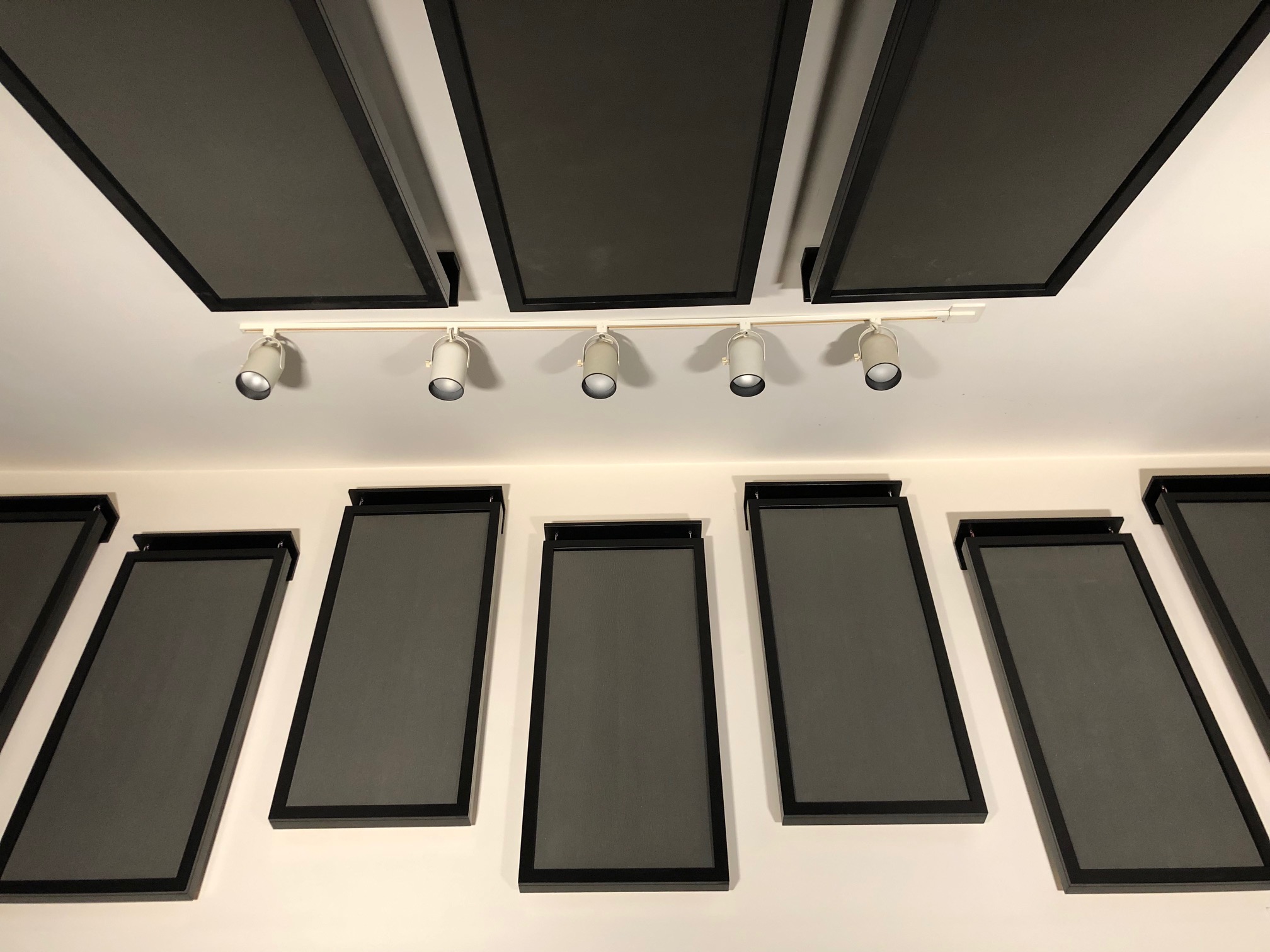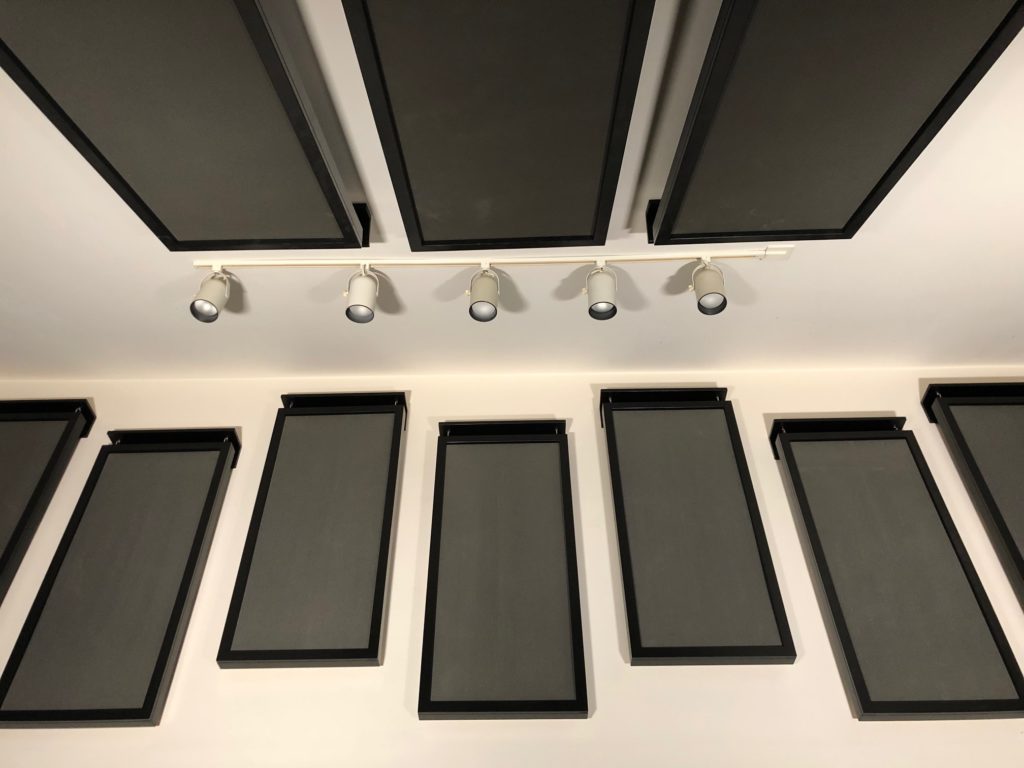
Custom acoustic panels can mean many different things. Are we creating a custom acoustic panel to absorb sound or are we creating a custom acoustic panel to diffuse sound. Absorption or diffusion are the two processes we have to work with when it comes to acoustical management. We can make custom acoustic panels to achieve both objectives. We must decide what type to use. Absorption is the process we think most of when we are considering custom acoustic panels.
Custom Size Acoustic Panels
A custom acoustic panel can have many different sizes and shapes along with numerous surface area covers. The design goal with any custom acoustic panels is to provide the proper rate and level of absorption for music and voice. Music and voice are very different than noise and the treatment type you use must honor those differences.
https://en.wikipedia.org/wiki/Diffusion_(acoustics)
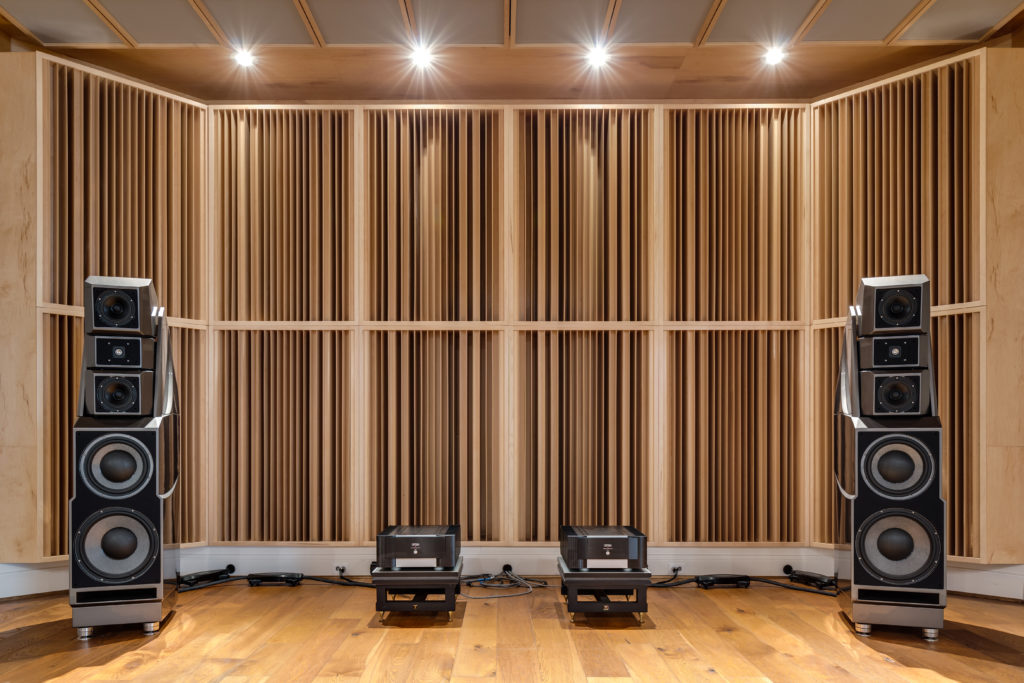
Music and voice require a certain rate and level of absorption in order to treat the energy that both music and voice produce. The rate of absorption is defined as how much energy is absorbed at each octave band. The level of absorption is how low in frequency the custom acoustic panels will start working at. Male human voice starts at around 80 hz. Female voice starts around 100 hz. Any level of absorption for male voice should start at 80 hz. level and move upward through 6,000 hz. The rate of absorption at that start point must be linear or smooth.
Custom Printed Acoustic Wall Panels
There can be no spatial irregularities in the response curve. Take a look at the graph below which shows our foam technology at Acoustic Fields. Notice how our 2″ foam starts working at 125 hz. If you double the thickness to 4″, you get a starting level of 90 hz. If you add an additional 2″ layer, you get custom acoustic panels that start at 80 hz. which is the beginning of male voice.
https://www.acousticfields.com/product/acda-10-studio/
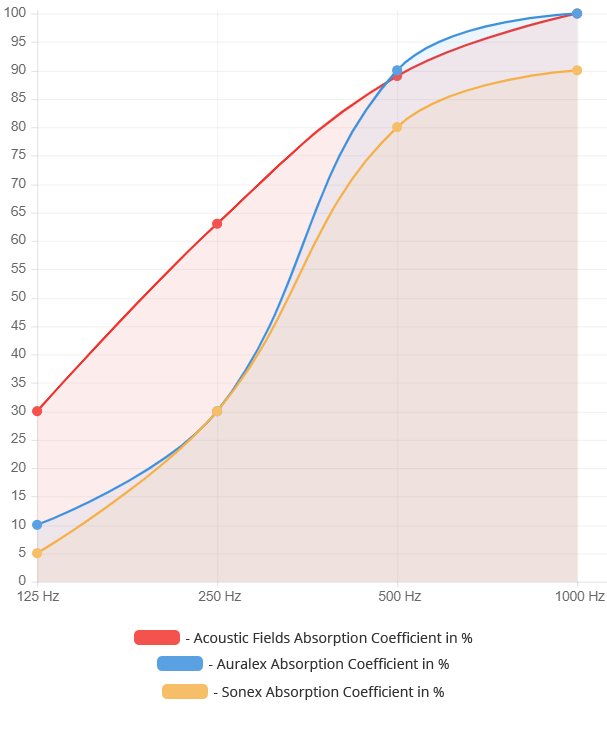
Notice in the graph above that there is a smooth rate of absorption starting at 125 hz. Notice once again how smooth and linear the transition is from that start point all the way through 500 hz. This frequency range is the most critical frequency range for music and voice. It must be smooth without any peaks or dips.
Custom Acoustic Art Panels With A Smooth Absorption Rate
Notice the competition below the red line. Notice how they have dips in performance. Dips means that they are not working to absorb energy at those frequencies. Why would you use a treatment type that does not work evenly at all frequencies? If you are using absorption in your custom acoustic panels you must have linearity in its performance. You must have predictability and consistency in any treatment technology when using absorption. Human voice requires this linearity since it is easy for us to hear small differences in human voice response.
https://www.definitions.net/definition/HUMAN+VOICE
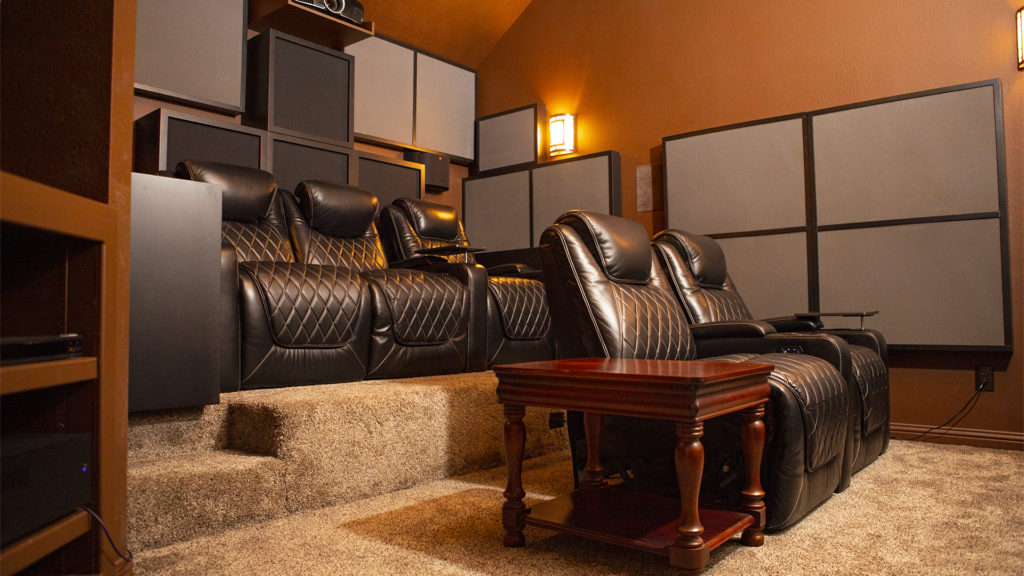
Middle and high frequency management is one thing but how about the bass? Lower frequencies require a completely different technology to treat. This is where people get confused. They try to use one technology to do both and it can not be done. Low frequency issues are a pressure based issue. You must use a pressure based technology to treat lower frequency pressure issues. There are three types of low frequency absorption technology.
At Acoustic Fields, we use diaphragmatic absorption. It is the most powerful of the three technologies. Diaphragmatic absorption will get lower in response and absorb more energy per square foot then any other technology type. We place our foam technology on the face of each unit directly behind the fabric. With this approach, you achieve a broadband absorber that starts at 30 hz. and goes through 6,300 hz.
https://www.acousticfields.com/diaphragmatic-absorber-diaphragmatic-absorption-explained/
All small rooms need low, middle, and high frequency management. With these three frequency ranges, it is all about providing enough surface area treatment coverage to treat the frequency and amplitude issues on each wall surface area. Every wall in our small rooms produces a certain frequency and amplitude issue. These issues are based upon the dimensions of the width, height, and length.
The dimensions of the room will tell us what energy will fit and what energy will not. The frequencies that do not fit will produce resonances or room modes. Room modes do two things. They can exaggerate certain instruments and make those instruments sound too “large”. Room modes can also attenuate certain frequencies. When this happens, you will not hear any instruments that fall within the frequency range of the room mode.


